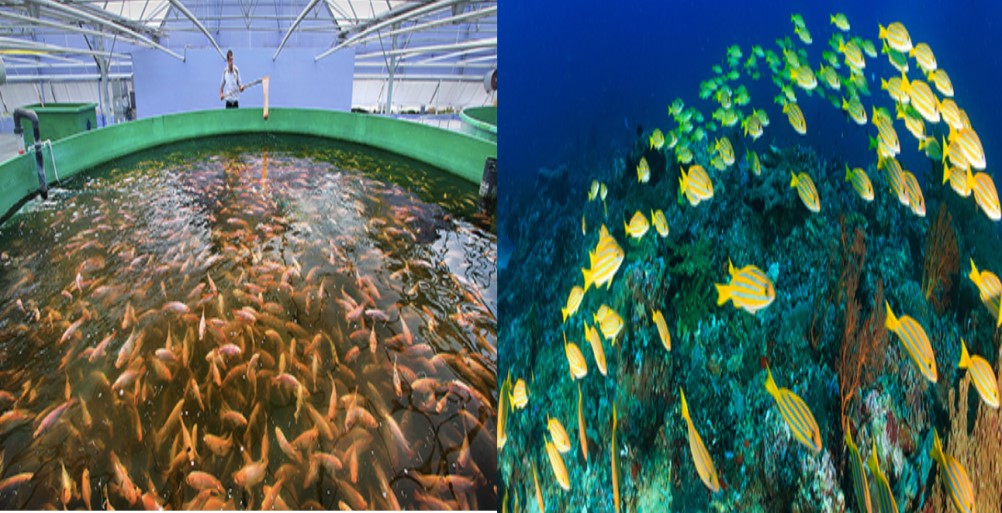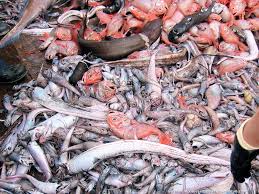Fishery | fisheries - meaning and illustration

TABLE OF CONTENTS
Reading time:
Last modified:
2023-02-15 00:00:00
1. Synonyms, etymology, translation, definition, examples and notes
1.1. Subject field:
- Fisheries. (Hierarchy:
- Fisheries )
1.2. IPA transcription and prononciation for fishery and fisheries:
Fishery /ˈfɪʃərɪ/
Graph 1 : fishery, fisheries - Google ngram extract ( graph of term etymology and evolution. Source: Google ngram )
1.4. French translation of fishery and fisheries:
Fishery can be translated into French as:1.5. Definition of fishery in fisheries:

1.6. Plural of fishery:
Fisheries;
1.7. Notes on fishery
Fishery/fisheries can mean either the enterprise of raising or harvesting fish and other aquatic life;[1] or more commonly, the site where such enterprise takes place (a.k.a. fishing ground). Commercial fisheries include wild fisheries and fish farms, both in freshwater bodies (about 10% of all catch) and the oceans (about 90%). About 500 million people worldwide are economically dependent on fisheries.
According to the FAO,
"a fishery is an activity leading to harvesting of fish. It may involve capture of wild fish or raising of fish through aquaculture." It is typically defined in terms of the "people involved, species or type of fish, area of water or seabed, method of fishing, class of boats, purpose of the activities or a combination of the foregoing features".
This definition often includes a combination of mammal and fish fishers in a region, the latter fishing for similar species with similar gear types (Wikipedia). Some government and private organizations, especially those focusing on recreational fishing include in their definitions not only the fishers, but the fish and habitats upon which the fish depend.
Classification of fishery
Fishery, from its definition given above, can be subdivided into other subsectors including aquaculture (which is the culture of aquatic organisms), fishing (i.e. harvest of aquatic living resource from their natural habitat), fishery management (human control over fishery stocks for sustainable exploitation), fish processing, and fish marketing. All these subsectors of fisheries are also subdivided into their various branches. In this article, we are going to have an overview of the above mentioned subsectors of fishery. For more information about a subsector, kindly follow its link to access its full article, or search the particular subsector in the search box above. Here are major fishery sectors in order of existence:
1. Fishing (captured fishery)
Fishing is the harvest of living aquatic resource from their natural habitat. First and foremost, we need to have in mind that the term fishery is so polysemic and has more than 5 meanings. It may mean the industry, the stock exploited, the aquatic environment, the academic certificate, and so on and so forth. Moreover, 'fishing' is sometimes used interchangeably with 'fishery' to mean the harvest of fish. However, this article considers fishery in the context of an activity relating to the culture, management, harvest, processing or marketing of aquatic animals – thereby making fishing to be classified under fishery.
Fishing is the oldest of all fishery subsectors, with authors holding that it the activity dates back to around 30,000 BC, when a group of Neanderthals was caught trying to fish in a river in Germany. Over time, fishing evolved from a pure subsistence activity to a commercial and leisure activity.
2. Aquaculture (culture fishery)
Aquaculture is simply the culture of aquatic organisms. This is the second oldest subsector of fishery, likely to have originated before the 1950s. Aquaculture on its part subdivided into pisciculture, algoculture, shrimp farming or astaciculture, etc.
3. Fishery management
The subsector of fishery management includes all human action geared towards managing fishery stocks for sustainable exploitation. Fishery management happens to be a more recent concept, with the word ‘fishery management’, which probably originated around late 19th century. As time went by, this subsector developed and gave birth to many other subcategories. Today, international organisations have been established to handle fisheries management issues notably Regional fisheries management organisations (RFMOs). Examples of which are: International Commission for the Conservation of Atlantic Tunas (ICCAT), North-East Atlantic Fisheries Commission (NEAFC), Northwest Atlantic Fisheries Organization (NAFO), etc.
4. Fishery processing / fish processing
The subsector of fish processing deals with the chemical or mechanical transformation of fish to obtain derived and by-products, for sale or better storage. The fish processing industry equally developed far back after the development of fishing. In ancient times, the fish processing industry was yet traditional as fishers used artisanal methods to conserve their surplus fish arising from fishing. Such artisanal or traditional fish processing methods include smoking, drying, salting, and just to name a few. Today, with the advent of modern industrial techniques, the fish processing industries is fast developing and fish can be processed into a variety of valuable products, and by-products such as fish meal, fish oil, etc.
Fishery terminology records for Fishery
1. Law No. 94/01 of 20 January 1994 to lay down forestry, wildlife and fisheries regulations in Cameroon, article 1:
" This law and the implementing instruments thereof lay down forestry, wildlife and fisheries regulations with a view to attaining the general objectives of the forestry; wildlife and fisheries policy, within the framework of an integrated management ensuring sustainable conservation and use of the said resources and of the various ecosystems. "
2. Decree No. 95/413 /PM of 20 June 1995 to lay down certain conditions for the application of fisheries regulations., Chapter I, article 2, paragraph 4:
" Sport fishing: fishing practised by amateurs, particularly by angling, diving or using means authorised by the fisheries administration. It excludes any commercial transaction. "
3. Law No. 94/01 of 20 January 1994 to lay down forestry, wildlife and fisheries regulations in Cameroon, article 4:
" Fishery or fishing, within the context of this law, means the act of capturing or of harvesting any fishery resources or any activity that may lead to the harvesting or capturing of fishery resources, including the proper management and use of the aquatic environment, with a view to protecting the animal species therein by the total or partial control of their life cycle. "
4. Law No. 94/01 of 20 January 1994 to lay down forestry, wildlife and fisheries regulations in Cameroon, article 4:
" Fishery resources, within the context of this law, means fish, seafood, molluscs and algae from the marine, estuarine and fresh water environments, including sedentary animals in such environments. "
5. Law No. 94/01 of 20 January 1994 to lay down forestry, wildlife and fisheries regulations in Cameroon, article 8, paragraph 1:
" Within the context of this law, logging or customary right means the right which is recognized as being that of the local population to harvest ail forest, wildlife and fisheries products freely for their personal use, except the protected species. "
3. Images related to 'Fishery'

LEAVE A COMMENT




 Linkedin
Linkedin share
share tweet
tweet